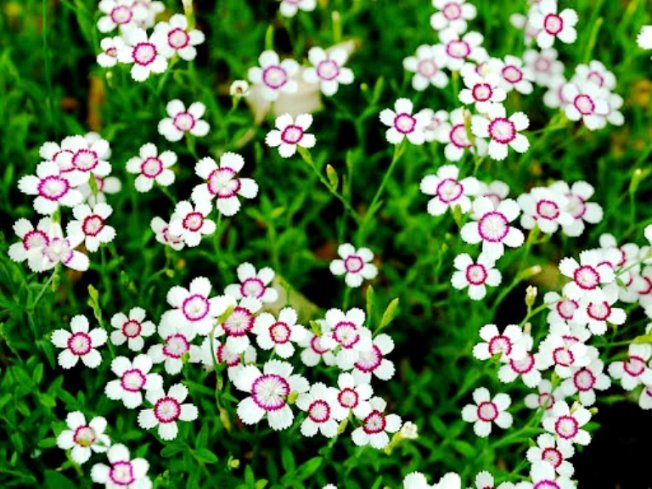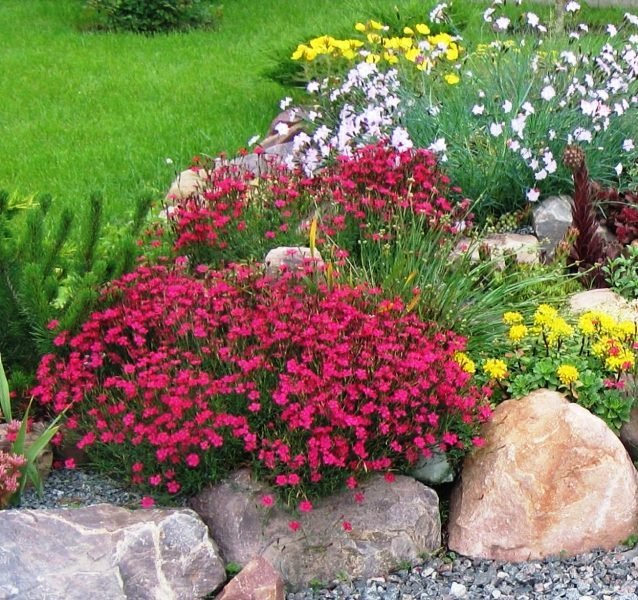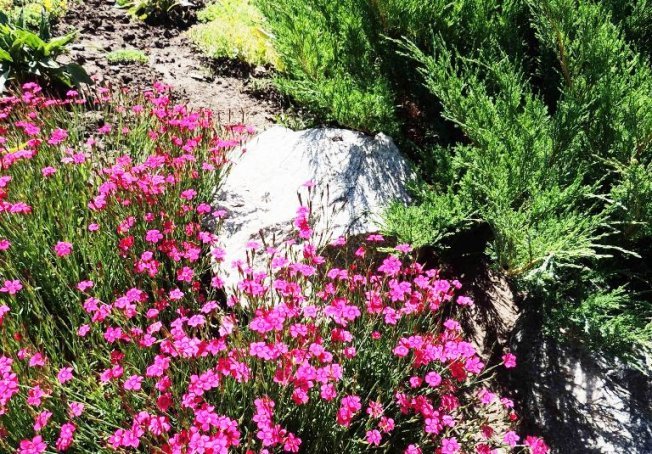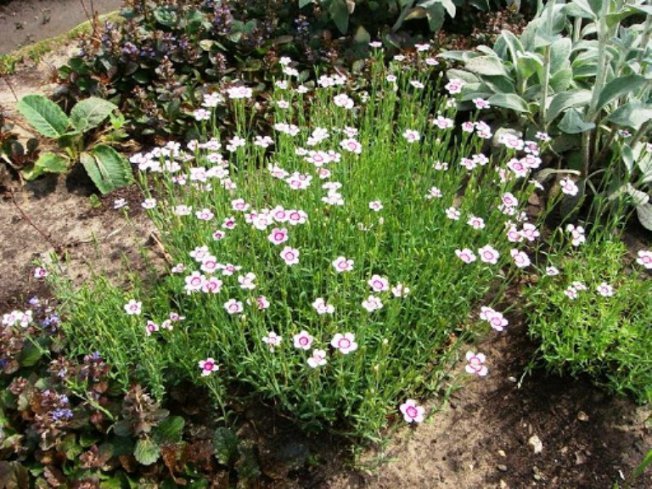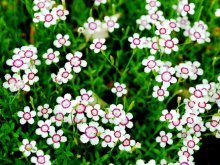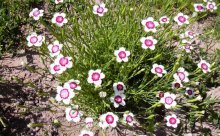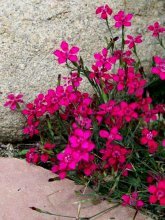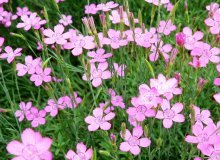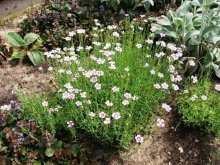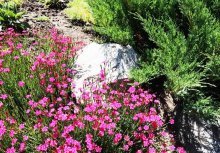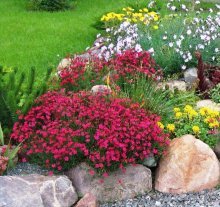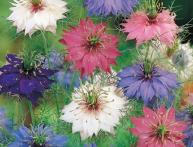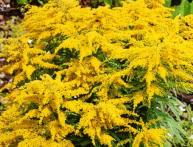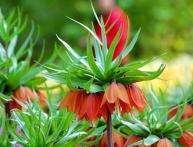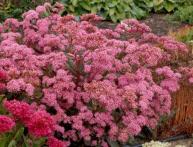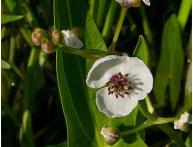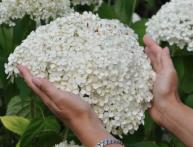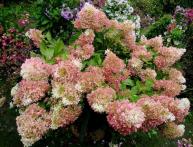Carnation grass, planting and care in open ground, plant characteristics and characteristics of popular varieties

Gardeners are very fond of carnation grass, as thanks to it you can decorate gardens, parks, alpine hills, giving the site an unusual design.
In order for plants to be a real decoration, it is important to know small nuances of agricultural technology.
Let's look at how to plant and care for carnation grass in the open ground, tips for creating landscape design and cultural features.
Content:
- Carnation grass, description and photo
- Popular varieties, their characteristics, when they bloom
- Carnation grass, planting seeds and care in open ground
- Growing weed in a pot
- Vegetative propagation of a plant
- Growing from seedlings
- Application in landscape design
- Prevention from pests and diseases
Carnation grass, description and photo
The plant is a perennial crop and a ground cover species.
Carnation develops and grows within four to six years.
External data:
- the shrub is forty centimeters tall;
- many stems grow on a bush at the same time;
- leaf width is approximately one millimeter, sharp shape;
- each shoot has one bud;
- the colors are different, it all depends on the plant variety, most often purple, pink and white colors are observed (sometimes there are two or three-color buds, or a combination of the same color, but of different shades);
- there are fruits in the form of a box where the seed ripens.
For growing, it is better to use high ground and sandy soil; the flower does not need special care; the advantage is good disease resistance.
Popular varieties, their characteristics, when they bloom
The most popular varieties are low-growing, two-color and contrasting. Large bushes are used to decorate rose gardens, flower beds and parks.
Popular varieties include those listed in the table.
| Variety | Description, features |
| Diamond | Its advantages are early flowering, unpretentiousness and compactness. The height of the bush ranges from 15 to 20 centimeters. The shoots are bluish in color and branch. The inflorescences are small, red-crimson in color, with a bright burgundy ring in the center. The flower blooms in mid-May or early June, and blooms until the end of summer. Used for decoration |
| Confetti | The bushes are dense with branched shoots, small, about fifteen centimeters in height. The buds are one and a half centimeters in diameter, with jagged edges. The color of the flower is dark red, there is a shine. The bushes are dotted with inflorescences. The flowering period occurs in May and ends in early September. The variety is resistant to cold |
| Shrimp | In this case, the bushes are spreading, their height is 15-20 centimeters. The leaves and stems are green in color, with a pleasant blue tint. There is a small fluff. The buds have small teeth on the edges, are pink in color, and have a burgundy ring inside the flower. The flowering period begins in June and ends in August, blooms profusely throughout the entire period. |
| White Red | The flowers are low-growing, the height of the peduncle is fifteen centimeters. The buds are small and have a rich spicy aroma. The color is white, the core is raspberry or dark pink. The culture blooms from June to the last days of August |
Each variety is unpretentious and does not require special agrotechnical skills.
Carnation grass, planting seeds and care in open ground
There is a certain technology:
- Preparatory work is carried out in late April or early May.
- As a preventative measure, the soil is treated with an antifungal agent; this will protect the crop from diseases and insects.
- When preparing the soil, sand should predominate.
- Plant seeds in limited flowerpots.
Cloves are a heat-loving plant. In the room where the flowerpots are located, the optimal temperature is considered to be from plus 16 to plus 20 degrees.
The temperature during the seed growing period should not fluctuate for fourteen days. Thanks to this, the sprouts will become stronger and better germination will occur.
The seedlings are ready for planting in open soil when four full paired leaves are formed on the stem. Sowing is carried out in open ground after the end of frost. If the weather does not stabilize in any way, it is better to leave the seedlings in a greenhouse or conservatory.
Flower growers rarely use seed planting, since the process takes time and the result is not always positive.
During sowing, cloves may grow in different colors; if the seeds are planted close to each other, the seedlings will be poor. A minor weed or nutrient deficiency will cause the seeds to die.
Maintenance requirements are minimal.Watering is required, but moderation is necessary in everything; excessive watering of the soil will lead to rotting of the root system and even death of the flower.
It is worth monitoring water stagnation and watering in doses.
The next point is the application of fertilizers. It is important to act comprehensively - in early spring, fertilizer is added to the soil, which includes phosphorus and nitrogen, and in the summer season, calcium and magnesium are used as fertilizers, and iron-based mixtures are introduced as an additional means.
Closer to winter, the bush is formed. Some varieties need light wrapping for the winter.
By following all the rules, growing plants will not cause difficulties, but will delight you with abundant flowering and aroma.
Let's watch a useful video about carnation grass, planting and caring for the plant:
Growing weed in a pot
There are no varieties of indoor carnations; they are all designed for growing in the garden and open ground. However, some types of this crop can be used for growing at home.
Carnation grass is not grown in flowerpots. This variety is ground cover, so it cannot be replanted or subjected to other manipulations.
Gardening experts recommend For these purposes, use Chinese cloves, as well as varieties Grenadine, Shabo and Geddevig.
Vegetative propagation of a plant
Vegetative propagation of a flower is propagation by dividing the bush. This method is very good, since the procedure does not cause difficulties. Manipulations are carried out in the spring.
The shrub is carefully dug up and divided into even parts so as not to injure the roots and shoots.
The resulting seedlings are dropped onto a designated area, filled with water, mulched and subsequently cared for as required for this crop.
This carnation has the ability to root at nodes, so it is also propagated by layering. The procedure is carried out at the end of May, beginning of June. At the main bush, a shoot is bent and dug in, sprinkled with soil and secured with a bracket.
You need to dig in the cuttings so that the top of the head remains outside, above the ground. Water and mulch to retain moisture, for example, using agrofibre. By next spring, the cuttings will have strong roots, and the young plants are separated from the mother bush.
Let's watch a useful video about carnation grass:
Growing from seedlings
Before planting seedlings, the first thing to do is select an appropriate site. Carnation is a heat-loving and sun-loving plant, so you need to plant carnations in a flowerbed or flower garden so that it is not shaded by other crops.
The flower can grow in the shade, but development will be slow and the number of buds will be half as large.
Temperature is important. Outdoors, the optimal temperature for planting is considered to be plus 15 degrees.
The earth is dug up, leveled, and weeds are removed. Dig holes fifteen centimeters deep. The seedlings are planted at a distance of 30 cm. At the end of the procedure, watering is carried out.
Application in landscape design
Carnations are often used to decorate city parks, alpine slides, rose gardens and create landscape compositions. The flower goes well with other shrubs and flowers, adding its own zest and beauty. When creating an artificial landscape, plants combine well with stones and other elements.
Due to the fact that the flower is low in stature, it is used in the landscape to create multi-level flower beds or other complex structures. Also, professional gardeners use this type simultaneously with lawn grass, alternating it when planting or replacing it altogether.
As a composition, the flower can be planted near a fence or stone structures; its attractive appearance will attract attention and highlight the rough appearance of these structures.
This crop is used to decorate garden paths, they make a natural border, and the flowers serve as an excellent addition to decorative tiles.
Since carnation is a perennial crop, the design will become more beautiful every year, adding naturalness and charm to the site.
Prevention from pests and diseases
Prevention from diseases and pests should be carried out regularly so that the root system and external indicators of the flower are not damaged. It is recommended to carry out the following manipulations.
Earwigs and mole crickets like to feed on young shoots and roots. As a preventive measure against these pests, it is necessary to perform the following actions: dig up the area in the fall, spread manure into shallow holes, which acts as bait for mole crickets (the bait is placed in winter).
There is another trap for earwigs. Place a wooden board on the area and wet grass under it. Such pests hide in such structures from the sun's rays. As soon as the insects settle in the shelter, they are destroyed.
Fusarium is a plant disease associated with excessive accumulation of moisture. Carnations do not tolerate waterlogging, so it is worth controlling watering.As a preventative measure, it is recommended to reduce the amount of nitrogen fertilizing during illness and add more phosphorus and potassium. Mulch the soil using fine gravel and sand.
Remove the damaged parts of the flower, and spray the uninfected parts with a fungicidal solution.
To prepare the solution, use ten liters of water and ten milligrams of the substance. Repeated treatment is carried out after ten to fifteen days.
Prevention of rust is to reduce watering, introduce potassium and reduce nitrogen.
Alternaria fungal infection can be prevented by treating the seed material with fungicides and then heating it in an oven at a temperature of plus 50 degrees. Increase the dosage of potash and phosphorus fertilizers. In case of infection, the plant is treated with copper oxychloride and Bordeaux mixture.
So, carnation grass is a popular perennial plant, which is famous for its unpretentiousness and presentable appearance.
If you follow all the rules during planting and care, the flower will delight its owner with tenderness and beauty for many years!

